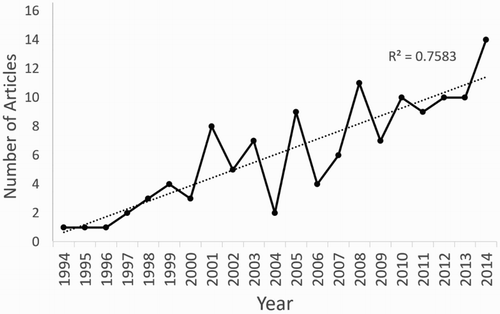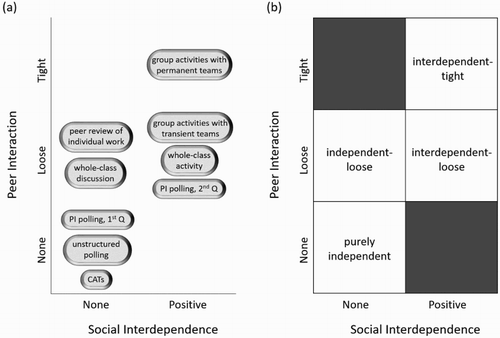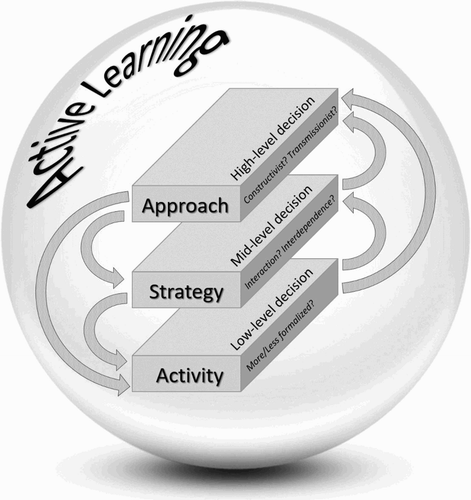Figures & data
Table 1. Different combinations of the terms were used in the title, abstract, and key words in ERIC’s filterable fields to search for appropriate literature.
Figure 1. A positive trend in the number of peer-reviewed articles about active learning in college science classrooms is observed.

Figure 2. The active learning strategies (ALSs) model connects in-class activities with active learning strategies (see text for explanation of activity versus strategy). (a) Different kinds of in-class activities are characterised according to the extent to which they use peer interaction and social interdependence to facilitate active learning. The kinds of activities are superimposed above the categories to which they belong. Note: ‘CATs’ are classroom assessment techniques and ‘PI’ is peer instruction. (b) Four types of active learning strategies emerge from the characterisation of in-class activities.

Figure 3. Within the sphere of the catch-all term ‘active learning’, three distinctions are made: active learning activity, active learning strategy, and active learning approach (see text for definitions). These distinctions represent different concepts of active learning and different levels of instructional decisions that enable active learning. The arrows indicate that instructional decision-making may originate from and lead to other levels of decision-making.

